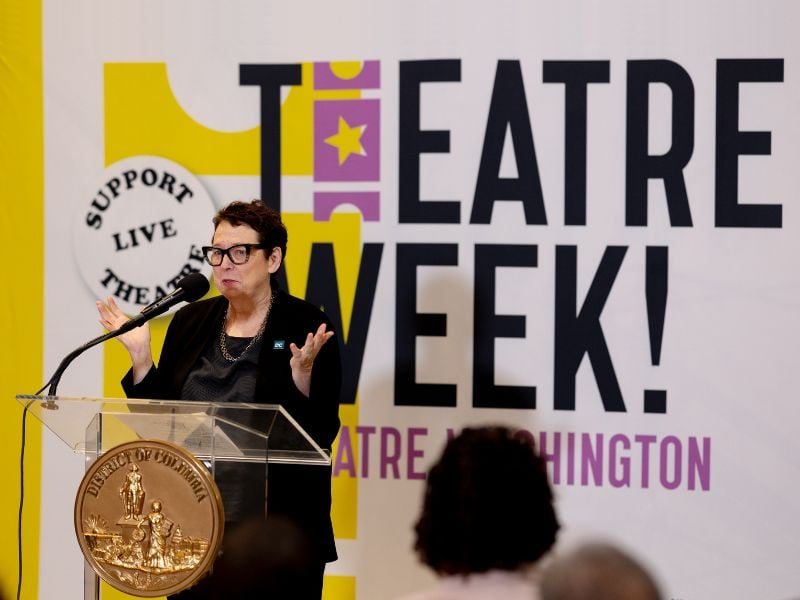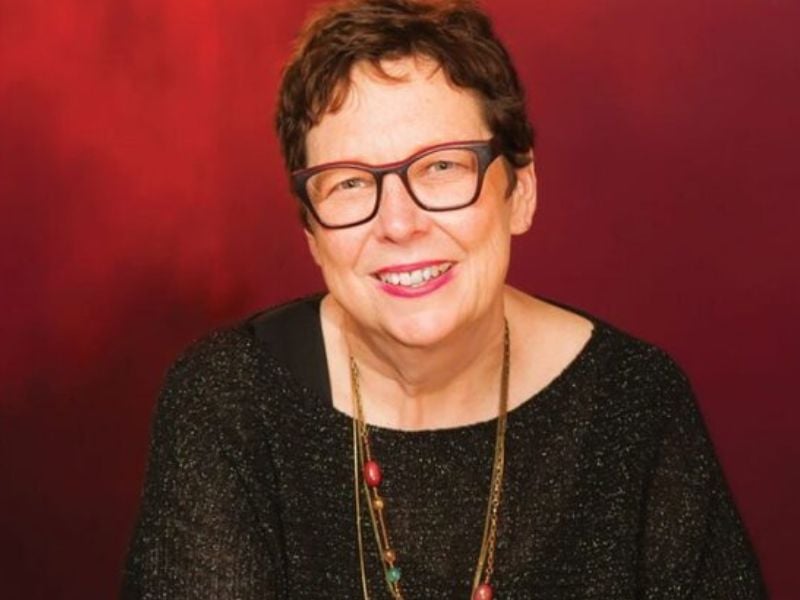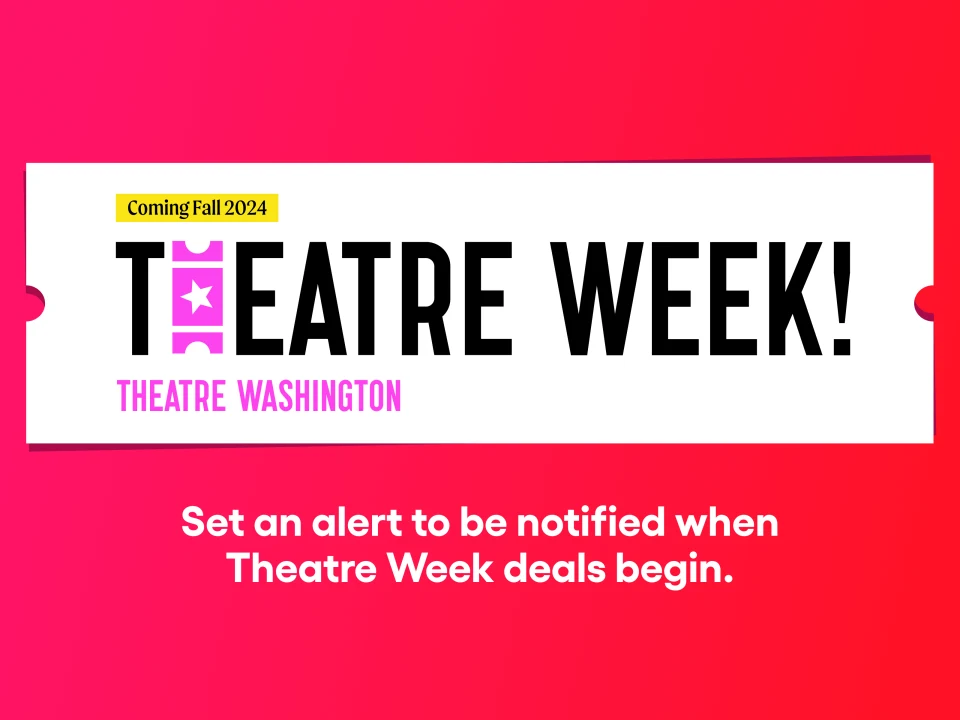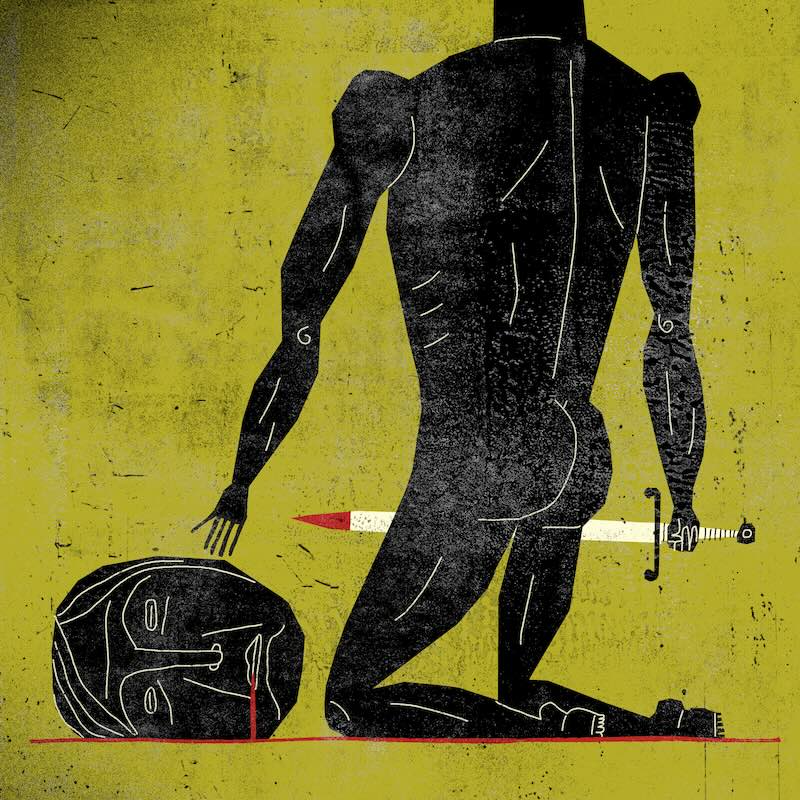September 2024 is shaping up to be one of the busiest since the “end” of the pandemic. Theater seasons have been announced, auditions have been scheduled, and it’s hard to imagine that anyone is working as hard to showcase the achievements in the District’s theater scene as Amy Austin, CEO and president of Theatre Washington.
Beginning September 9, audiences can see Amy Austin and Theatre Washington’s work on Theatre Week, offering discounts, programs, and ways to discover new productions and venues in the area. With Theatre Week around the corner, Austin sat down for a remote interview with DC Theater Arts to discuss what she’s looking forward to, and the future of the industry as a whole. (This interview has been edited for length and clarity.)

DCTA: It sounds like Theatre Week was created to model Restaurant Week with the intention to introduce audiences to new experiences. What do you think the purpose is behind the week? And how do you feel it benefits audiences and the theater community overall?
Amy Austin: We joke that it’s really Theatre Three Week because it does go over a longer period of time. But you get across the ideas that are ingrained in Restaurant Week. This is our seventh one. It mirrors Restaurant Week in that it engages people to think about going to the theater. It engages them to look and explore. You’ve got these ticket prices like you do at Restaurant Week that are a range — $20, $40, $60 — so you know what the cost is going to be.
What I find when I talk to people about Theatre Week is they are reminded of how much they love going to the theater. Some remember going to plays in high school, and some haven’t been back to the theater, especially during COVID. There’s been some lapse, but they want to go back. This is a time of return — it continues to be a time of return
It also allows them to discover that there are more than three dozen theaters that are having productions at any one time. And there are 85 theaters in the region.
Anything from previous productions or from previous Theatre Weeks that stood out to you, that you’re looking forward to seeing again this year?
Theatre Washington produces a number of events that help people engage in theater, beyond just buying tickets and going to shows. It’s about exploring theaters in different ways. One of my favorites is the #DCtheatre Bike Ride. It’s a moderately hard ride, and we visit several theaters all in one day. We have theater industry people come along, and guest stars greet us when we arrive at the theaters. They talk about everything from costumes to directing, and we even get some sneak peeks at their facilities.
And then we have another event that we’re doing for the third time: the City on the River Concert on the Wharf. We have over a dozen performers coming to sing. It’s just a wonderful day — a great way to experience music and see the depth of talent that lives and works in our region.
This year, we have something new: an artist named Mēlani N. Douglass. She’s incredible, and she’s doing this work she calls “The Living Room,” which we’ve engaged her to do an hour before the concert. It really is an engagement that helps you discover, remember, and think about how theater relates to your personal life. It’s very intimate, but it’ll be in this big setting on the Wharf.
From the projects you’ve worked with, including the Helen Hayes Awards, what do you feel are some of the most impactful Theatre Washington programs that have helped to shape the DC theater scene?
The Helen Hayes Awards is a wonderful, beautiful, extraordinary event that we’ve produced at a bigger level in the last couple of years, especially after the pandemic. This year, we seated 1,600 people, so it’s really a wonderful way for the community to get together and celebrate each other. And by community, I mean not only artists and organizations but also the audience.
But the thing about the Helen Hayes Awards is that it’s all year long — it’s not just the celebration. We have a pool of 50 volunteers who are judges, and they go to see every production that meets certain criteria. The judges look at the artistry, design, and everything else. That’s a real and consistent contribution to the community.
You can think about it as an award show, but it also represents an amazing volunteer workforce. For the people who get recognized, it means so much to be singled out and told that their work was outstanding.
We built Theatre Work on our website to be a more comprehensive program in 2022. It has over 350 profiles posted from industry professionals, with descriptions, résumés, and the type of work they are seeking. Additionally, organizations post job opportunities. It’s really great, and I have tons of stories of people getting work and making connections because their profile was there.
On our website, you can find the most recent mentor-mentee pairs in our Mentorship Program. It’s the first time we’ve put up their résumés and profiles to show who was in the cohort.
One of the things that really stood out to me was the conversation about trying to support growth for companies, institutional growth, and the advancement of the individual artists. Do you find yourself having to strike a balance between these goals?

When I got here, there were a lot of conversations with many people about “Who do we serve?” The answer we came up with, collectively, was not an easy one. We realized that you can’t serve artists without serving organizations. They work in an ecosystem, and unless you’re deliberately thinking through what the needs are at each of those levels, the programming and the sensibility of our organization won’t work.
For example, the Theatre Work program gives organizations the opportunity to find a workforce they may not have known about. This serves both communities. Similarly, Theatre Week serves both audiences and organizations, creating a Venn diagram of service between those two constituencies. The artists are always part of the equation because we can’t do the work without them.
If that makes sense, our organization is always thinking through the lens of how to serve these three communities.
You emphasized the concept of collective action or a collective approach. Can you elaborate on what that looks like within your organization? What does that look like within the arts community overall? How are you seeing that kind of driving change or evolution for theater in the region?
Some small and some large examples, but probably the biggest one is when COVID hit. We were instrumental in bringing the theater community together really quickly to help fund people who were out of work. The Taking Care Fund, which has been a great program since 2011, was ready to take care of people in this time of great need. We raised a million dollars in two years, which was extraordinary for the program. Organizations pushed it out to their people, artists promoted it within their networks, and donors came from all directions to support the community that had given them so much.
During that time, we also worked on COVID safety requirements, encouraging people to share what they were doing internally. More importantly, we focused on making the audience experience consistent across the region. We had a statement on our website explaining to audiences what to expect, and as COVID evolved, so did those statements. This collective action kept artists, audiences, and administrators, such as box office staff, safe.
Additionally, we do collective action when advocating for more funding for the arts from the government. If an issue arises within the community, we try to see how we can help, acting as a neutral party at times to help resolve tensions.
Is there an example of a recent collective effort beyond the pandemic? Or do you feel we’re still in recovery mode from the pandemic?
Probably, yes, we are still somewhat in recovery mode. However, it’s not just about the pandemic anymore. For example, we completed anti-racism training for ushers last year, and we’re working on bringing it back and refining it. Ushers are often the first and only people theatergoers interact with, and while they may think their role is just handing out programs, it’s much bigger than that. We wanted them to view their work through an anti-racism and anti-oppression lens, which was powerful and also reinforced the importance of their role.
As for the Taking Care Fund, it’s active and ongoing. Founded in 2011, it launched an initiative in March 2020, where anyone who had worked in the region in the past two years was eligible for $500, with some able to receive up to $5,000 based on need. What I thought would last for two months became two years.
The fund now works on a monthly schedule, accepting applications for housing insecurity, medical issues, car repairs, and other needs. A committee reviews these applications, and we have very generous donors, largely audience members, who support the program.
Theatre Week discounts for shows from September 26 through October 13, 2024, will be available September 9 at theatreweek.org. Discount tickets to over 30 productions will be available exclusively on TodayTix, the official ticketing partner of Theatre Week.
SEE ALSO:
Theatre Washington Announces Theatre Week September 26 to October 13 (news story, August 16, 2024)





